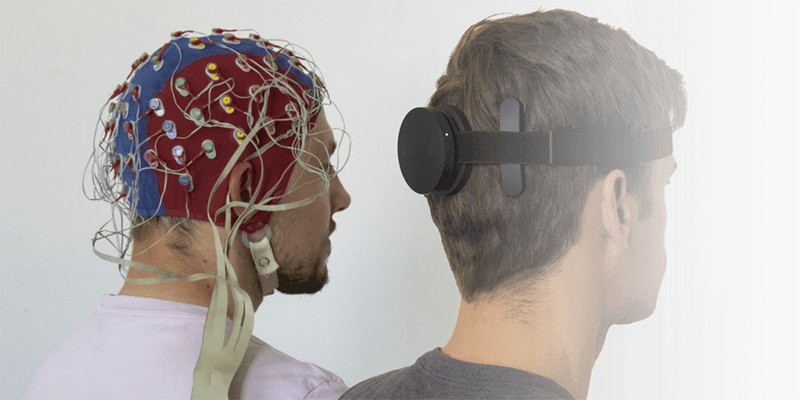How Brain-Computer Interfaces Are Changing Neurology?
In an era where technology is intricately intertwined with biology, brain-computer interfaces (BCIs) emerge as a pioneering innovation within the neurological landscape. These groundbreaking devices not only establish a direct communication link between the human brain and external machinery but also offer transformative potential in treating neurological disorders such as paralysis, epilepsy, and ALS.
In an era where technology is intricately intertwined with biology, brain-computer interfaces (BCIs) emerge as a pioneering innovation within the neurological landscape. These groundbreaking devices not only establish a direct communication link between the human brain and external machinery but also offer transformative potential in treating neurological disorders such as paralysis, epilepsy, and ALS.

As researchers delve into BCIs' vast possibilities, they uncover new avenues to enhance our understanding of brain functionality while improving the quality of life for those facing neurological challenges. This burgeoning field warrants a closer examination of its fundamental principles, historical development, and groundbreaking applications.
Understanding The Fundamentals Of Bcis
Brain-computer interfaces (BCIs) are advanced systems designed to create a direct communication channel between the human brain and external devices, allowing users to manipulate technology directly through their neural signals. BCIs function by interpreting electrical activities within the brain, primarily achieved through electroencephalography (EEG) or implanted electrodes. This enables immediate responses based on user intent or commands.
BCIs can generally be classified into two categories: invasive and non-invasive. Invasive BCIs involve surgical interventions to implant electrodes deep within brain tissue, allowing for high-resolution neural data with minimal interference from external noise. A leading example is the BrainGate system, which has demonstrated remarkable efficacy in clinical trials for individuals with spinal cord injuries.
On the other hand, non-invasive BCIs, like EEG caps, circumvent surgical procedures, although they usually provide lower signal fidelity. Examples of non-invasive BCIs include Emotiv headsets, widely used in research and consumer gaming applications. While invasive BCIs excel in accuracy, they come with inherent risks associated with surgical procedures. Non-invasive BCIs, although safer and more accessible, trade-off precision for convenience. Understanding these varied characteristics is crucial as BCIs advance and find relevance in addressing a broader spectrum of neurological ailments.
Historical Milestones In BCI Development
The evolution of brain-computer interfaces (BCIs) has been marked by landmark advancements that reflect their transformative impact within the field of neurology. An essential milestone occurred in the late 1960s when neuroscientists first demonstrated that electrical signals emitted from the brain could directly control external devices. This pivotal moment laid the foundation for the burgeoning field of BCI technology, enabling the integration of brain activity into realms of communication and control.
By the early 2000s, the advent of invasive BCI systems, such as the Utah Array, remarkably improved accuracy in decoding neural signals. This leap forward enriched user interactions with prosthetic technologies and ignited innovations in neurorehabilitation approaches. These hallmarks in BCI history have significantly influenced contemporary applications, underscoring their potential in restoring mobility to paralyzed individuals and opening new treatment possibilities for neurological disorders—laying a pathway for ongoing advancements in the domain.
Transforming Neurological Rehabilitation With Bcis
BCIs are radically changing the landscape of rehabilitation for stroke patients, yielding substantial enhancements in recovery outcomes. A remarkable instance involves a 52-year-old stroke survivor connected to a pioneering BCI system that converted her neural signals into movement commands for a robotic arm. In just weeks, she regained the functionality required for her daily tasks, demonstrating the extraordinary impact of direct neurofeedback on physical rehabilitation. Another compelling study observed a cohort of stroke survivors utilizing a BCI to control virtual objects or their limbs merely through thoughts. This innovative framework not only spurred improvements in motor function but also boosted motivation levels among the participants, promoting greater engagement in rehabilitation therapy.
Moreover, anecdotal accounts from therapists reveal that patients report heightened connections to their movements, promoting emotional and cognitive recovery in tandem with physical rehabilitation efforts. As BCIs increasingly integrate into traditional rehabilitation protocols, these compelling success stories herald a significant transformation, paving the way for more personalized and impactful interventions in stroke recovery. The continued evolution and application of BCIs indicate a promising future where neurological rehabilitation is substantially more effective, ultimately enhancing patient quality of life and restoring essential functionalities lost due to strokes.
Bcis Revolutionizing Treatments For Neurodegenerative Diseases
Brain-computer interfaces (BCIs) are reshaping treatment methodologies for neurodegenerative conditions such as Amyotrophic Lateral Sclerosis (ALS), Parkinson's disease, and multiple sclerosis. These innovative technologies enable direct communication pathways between the brain and external devices, allowing affected individuals to regain some control over their movements and improve their quality of life. For example, ALS patients have successfully employed BCIs to operate wheelchairs and computer interfaces simply by thinking about the desired action.
An inspiring narrative features Sarah, a 32-year-old ALS patient, who incorporated a BCI system into her daily routine, allowing her to communicate with her family through a speech-generating device, thus facilitating critical connections that her condition otherwise threatened to disrupt. Similarly, John, who has Parkinson's disease, experienced notable improvements in his motor skills thanks to BCI systems designed to fine-tune neural signals, leading to smoother and more controlled movements. These personal testimonies highlight the technical advancements and underscore the profound human experiences at the heart of BCI technologies, bridging the divide between disability and autonomy. As BCI innovations progress, the prospects for creating customized therapies that significantly enhance the lives of individuals grappling with debilitating conditions remain vast and hopeful.
Technological Advancements Driving BCI Progress
Significant strides in brain-computer interface technology are propelled by integrating artificial intelligence (AI) and machine learning, greatly enhancing performance and user functionality. By leveraging these cutting-edge technologies, BCIs can decode neural signals with unprecedented precision, allowing real-time communication between the brain and external devices. For example, AI algorithms can sift through massive datasets of neural data to detect patterns that enable users to intuitively control prosthetic limbs or computer interfaces with mere thoughts, vastly improving usability and responsiveness.

An exemplar of such innovation is evident in the projects underway at Elon Musk's Neuralink, where BCIs enhanced with advanced machine learning capabilities are currently undergoing trials in clinical environments. These interfaces are not solely centred on reinstating motor functions in individuals with spinal injuries but also aspire to enrich cognitive interaction for users, demonstrating the expansive potential of BCIs. Additionally, applications in assistive devices are advancing swiftly, with technologies like mind-controlled wheelchairs emerging as significant mobility enhancers for individuals facing severe disabilities. These transformational innovations depict a rapidly evolving BCI landscape, highlighting a future where seamless integration with AI could redefine human interaction with machines and fundamentally with each other.
Navigating Ethical And Social Challenges With Bcis
The emergence of brain-computer interfaces (BCIs) opens a Pandora's box of profound ethical challenges in neurology. With these technologies' capability to interpret intricate neural data, the risk of unauthorized intrusions into private thoughts or emotions looms heavy. Additionally, the ethical debate regarding the application of BCIs as enhancement tools as opposed to strictly therapeutic instruments intensifies. While these innovations may pave the way for revolutionary interventions for neurological issues, their potential use for cognitive or physical enhancement raises critical questions about inequality and social disparity.
The prospect of creating a “neuro-enhanced” societal divide could exacerbate pre-existing inequities. As such, robust regulations and in-depth discussions surrounding the ethical implications of BCI technology must be prioritized as these innovations unfold. Engaging policymakers, researchers, and all relevant stakeholders in meaningful dialogues is crucial to navigating the delicate balance between advancing scientific progress and upholding ethical standards, safeguarding that the advancements in BCIs are accessible and aligned with societal values.
Embracing The Future Of Bcis In Neurology
Looking ahead, the future of brain-computer interfaces (BCIs) projects a tremendous expansion in their role within neurology. Anticipated advancements promise to transform treatment methodologies for neurological disorders, ultimately improving recovery outcomes and enhancing patients' quality of life. Notably, the scope of BCIs may reach far beyond the horizon of neurology, suggesting interdisciplinary applications spanning rehabilitation, education, communication, and even virtual reality. As BCIs evolve, their convergence with artificial intelligence and machine learning harbours the potential to unlock revolutionary changes in medical practice and technological engagement, ushering in an innovative era that profoundly enhances human capabilities.
The Transformational Journey Of Bcis
Brain-computer interfaces (BCIs) are fundamentally altering the landscape of neurology, presenting unprecedented opportunities for individuals facing neurological challenges. This article has traced the foundational workings of BCIs, examined pivotal milestones in their historical evolution, and spotlighted their diverse applications in rehabilitation and communication. The ongoing advancements in BCI technology promise transformative impacts on patient outcomes, facilitating therapies once deemed unimaginable. As we forge into the future of BCIs, the path looks promising for those seeking improved quality of life and advancing neurological research. Concurrently, continuous ethical scrutiny will ensure that the implementation of these technologies adheres to responsible and effective practices.






